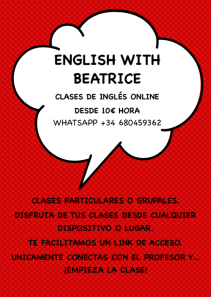Passive in English
We only use the passive when we are interested in the object or when we do not know who
caused the action.
Example: Appointments are required in such cases.
2. Passive – Form
to be + past participle
How to form a passive sentence when an active sentence is given:
- object of the active sentence becomes subject in the passive sentence
- subject of the active sentence becomes object in the passive sentence" (or is left out)
We can only form a passive sentence from an active sentence when there is
an object in the active sentence.
|
Type of sentence |
Subject |
Verb |
Object |
| Active sentence: |
Peter |
builds |
a
house. |
  |
| Passive sentence: |
A
house |
is built |
by
Peter. |
3. Examples
3.1. Simple Present
| Type of
sentence |
Subject |
Verb |
Object |
| Active sentence: |
Peter |
builds |
a
house. |
  |
| Passive sentence: |
A
house |
is built |
by
Peter. |
3.2. Simple Past
| Type of
sentence |
Subject |
Verb |
Object |
| Active sentence: |
Peter |
built |
a
house. |
  |
| Passive sentence: |
A
house |
was built |
by Peter. |
3.3. Present Perfect
| Type of
sentence |
Subject |
Verb |
Object |
| Active sentence: |
Peter |
has built |
a
house. |
  |
| Passive sentence: |
A
house |
has been built |
by
Peter. |
3.4. will-future
| Type of
sentence |
Subject |
Verb |
Object |
| Active sentence: |
Peter |
will build |
a
house. |
  |
| Passive sentence: |
A
house |
will be built |
by
Peter. |
3.5. Modals
| Type of
sentence |
Subject |
Verb |
Object |
| Active sentence: |
Peter |
can build |
a
house. |
  |
| Passive sentence: |
A
house |
can be built |
by
Peter. |
Active and Passive
forms
We listed active and passive forms in the following table. We used the
phrase I drive and put this phrase into the most common tenses.
|
Active (Simple Forms) |
| Simple Present |
I drive |
| Simple Past |
I drove |
| Present Perfect |
I have driven |
| Past Perfect |
I had driven |
| will-future |
I will drive |
| Future Perfect |
I will have driven |
| Conditional I |
I would drive |
| Conditional II |
I would have driven |
|
Active (Progressive/Continuous Forms) |
| Present Progressive |
I am driving |
| Past Progressive |
I was driving |
| Present Perfect Progressive |
I have been driving |
| Past Perfect Progressive |
I had been driving |
| will-future Progressive |
I will be driving |
| Future Perfect Progressive |
I will have been driving |
| Conditional Progressive |
I would be driving |
| Conditional Perfect Progressive |
I would have been driving |
|
Passive (Simple Forms) |
| Simple Present |
I am driven |
| Simple Past |
I was driven |
| Present Perfect |
I have been driven |
| Past Perfect |
I had been driven |
| will-future |
I will be driven |
| Future Perfect |
I will have been driven |
| Conditional I |
I would be driven |
| Conditional II |
I would have been driven |
|
Passive (Progressive/Continuous Forms) |
| Present Progressive |
I am being driven |
| Past Progressive |
I was being driven |
| Present Perfect Progressive* |
I have been being driven |
| Past Perfect Progressive* |
I had been being driven |
| will-future Progressive* |
I will be being driven |
| Future Perfect Progressive* |
I will have been being driven |
| Conditional Progressive* |
I would be being driven |
| Conditional Perfect
Progressive* |
I would have been being driven |
How to use the Passive in various
tenses
Here you will find some examples of how to form the passive depending on the tense.
|
Tense |
Active |
Passive |
|
Simple Present |
Peter builds a house. |
A house is built by Peter. |
|
Simple Past |
Peter built a house. |
A house was built by Peter. |
|
Present Perfect |
Peter has built a house. |
A house has been built by Peter. |
| Past
Perfect |
Peter had built a house. |
A house had been built by Peter. |
|
will-future |
Peter will build a house. |
A house will be built by Peter. |
| going
to-future |
Peter is going to build a house in summer. |
A house is going to be built in summer by Peter. |
Two objects in an active
sentences – two possible passive sentences
When there are two objects in an active sentence, there
are two possible active sentences and two possible passive sentences.
- Sentence 1: The professor gave the students the
books.
- Sentence 2: The professor gave the books to the
students.
There are two objects in each of the following sentences:
- Object 1 = indirect object → the students
- Object 2 = direct object → the books
An indirect object is very often a person, a direct object a thing. When a direct object is
followed by an indirect one, we put to in front of the indirect object.
Active sentence 1
|
Subject |
Verb |
indirect Object |
direct Object |
|
The professor |
gave |
the students |
the books. |
Active sentence 2
|
Subject |
Verb |
direct Object |
indirect Object with to |
|
The professor |
gave |
the
books |
to the students. |
Each of the objects (books/students) in the active sentences can become subject in the
passive sentence.
Passive sentence 1
|
Subject |
Verb |
Object |
(by-agent) |
|
The students |
were given |
the books. |
(by the professor). |
Passive sentence 2
|
Subject |
Verb |
Object |
(by-agent) |
|
The books |
were given |
to the students |
(by the professor). |


















